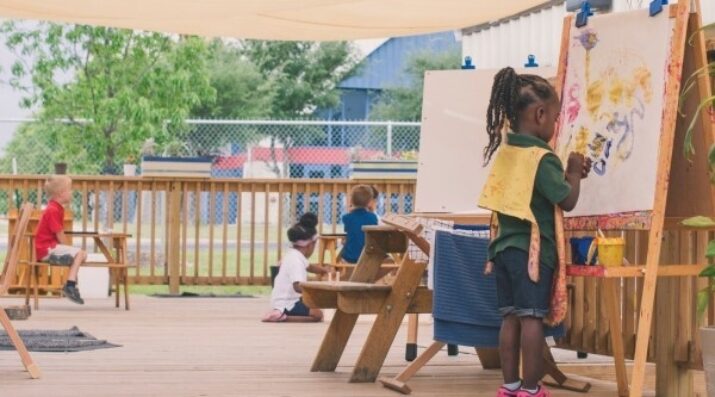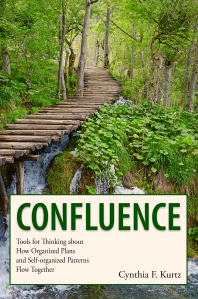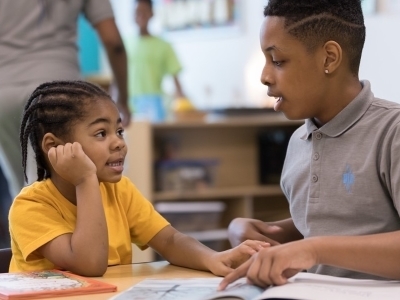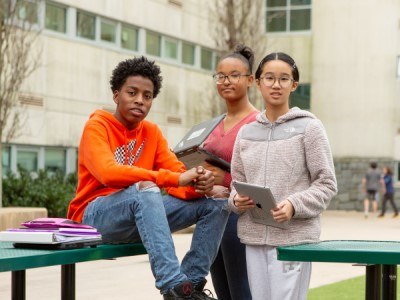Against Extractive Assessment
Topics

Educators are rethinking the purposes, forms, and nature of assessment. Beyond testing mastery of traditional content knowledge—an essential task, but not nearly sufficient—educators are designing assessment for learning as an integral part of the learning process.
If we want to lessen the extractive forces in our educational system, we might look to less aggressive forms of information gathering in learning and assessment.
In the book, Confluence, Cynthia Kurtz examines the relationship between planned systems and self-organizing systems. She does this in a number of contexts, looking at the ways planning and emergence impact each other.
An office building, for example, is almost entirely planned when it is at the stage of a blueprint. As it is being built, the realities “on the ground”—e.g., availability of resources, judgment of builders—shift away from the plan.
As the building is inhabited, tenants, policy, crime, law, weather, and entropy take it further from the plan. A lobby designed in the fabulous fifties style might be redone in a millennial minimalism. This isn’t part of the plan. Fashion and style are largely emergent. Fifty years on, the building is repurposed as living space because it’s too outdated to be any business’s flagship. One hundred years later, it’s a squat, being entirely reclaimed by the ecosystem.

Kurtz’ point of view isn’t that this is good or bad, but that it’s interesting, worth noticing, and worth commenting upon.
I read the book with an eye toward education and assessment. I had written pieces about how education is an ecosystem. Ecosystems are self-generating, but humans are part of the ecosystem, so human plans are also part of the ecosystem.
Status quo education, though, biases towards the plan, and devalues the emergent. Anything that can’t be controlled is considered suspect and invalid. A lot of my work is contra the obsessive drive we human adults have to control human kids, but I know the idea of shedding control totally is too much for most. Balance is the point.
There is a point where the gathering and use of things (including information about our kids) is generative. There is a point where it is extractive. Where is that point? Where is the balance? What is the right mix?
Cynthia Kurtz to the Rescue with an Analogy
In a later chapter of Confluence, Kurtz examines food gathering through the lens of emergence and plan. Looking through human history, Kurtz identifies five types of food gathering. This taxonomy acts as a useful analogy for the gathering of information in schools.
Foraging: The gathering of food where it falls, grows, or roams.
Humans make no attempt to alter the environment, other than to take food from it as it presents naturally. Think of berry picking, hunting, gathering dandelions for a salad.
How does this apply to education? Imagine a form of assessment in which we simply watch kids do things freely, don’t interfere, and discern from these observations what kids know and are able to do. We are gathering assessment information. We can use these observations to report on kids’ learning. I call this the Jane Goodall method of assessment. The fact that it compares kids to primates is just a bonus.
Adjusting: Making slight alterations in the environment to optimize the “appearance” of food that can then be gathered.
Humans do things like scatter seeds in a field, pull vines from a berry bush, cut away tall trees that block the sun from food producing plants, or pile rocks to create a shallow pool along the riverbank. It’s thought of as a transitional step to agriculture, but humans hung out at this stage for thousands of years.
How does this apply to education? You’re still observing kids in their somewhat natural setting, but you are shifting conditions to optimize the information you’ll get. Perhaps you’re setting up neighborhood Capture the Flag teams, introducing rules into the mix that don’t come from the kids. Buying a bike to increase the probability that they will learn to ride a bike. Perhaps you’re giving the kids a list of choices for their “free reading time.” Or you’re limiting the hours they can do a specific activity (e.g., staying inside playing video games) to incentivize them doing something else.
Imitating: Creating conditions to grow food as nature grows it, but isolated from nature.
Think of greenhouses or farmland. This begins the moment you make a furrow in the ground to create a garden or farm that is a separate piece of ground from “the world.” You’re letting natural processes work, but trying to make them more efficient. You are altering conditions to optimize them, but—when you weed the garden or spray the DDT—you are isolating the farm from nature. This describes pre-industrial farming, in which, as I have been known to say, “A farm is a desert for every plant except the single plant the farmer wishes to grow.” One still tends to the ground—one still cares for it—because the natural process is still the engine of generation.
How does this apply to education? This is school as originally envisioned. Pulling kids out of their natural element to create an artificial environment in which they can learn more efficiently. Maybe because we want them to learn more quickly, or we have more we want them to learn, or just to keep them off the streets—we isolate kids from the world. School is seen as a desert for all information except that which we hope kids learn. This isn’t how it plays out (see those above paragraphs about the connection of plans to emergence), but it’s the founding ideal.
Producing: Altering the ground and the conditions further and further from natural states in order to control and optimize production.
The line between imitation and production is not necessarily exact, but you approach production when you use planned methods to increase yield in a way that could not possibly be sustained if those methods were withdrawn. This may be the introduction of antibiotics to livestock so they can live in disgusting factory conditions, thus creating antibiotic resistant strains of disease, thus forcing the invention of new antibiotics, etc. Or it may be something as apparently natural as over-fertilizing and over-watering the southern Great Plains causing them, after some thriving, to dry out and blow away.
How does this apply to education? The particulation of education—dividing students into batches according to date of birth, dividing days into distinct subject areas, etc.—are the most widespread examples of this. Any time our methods—standardized testing, Science of Education, grading practices—overwhelm the relationship between the learner and the teacher, what they are trying to learn, and their community, then you are moving into educational production. The process of education becomes further and further removed from the people living that process, but—and here’s the thing—learning is meaningless when it is separated from the learner and their context.
Extraction: Removing resources from the Earth with no care that the context of the removal will be restored or that the resources will renew.
Think of mining, or water. When the coal is removed from the mountain, no one is trying to maintain conditions so that the coal can grow back. This has become even more egregious with strip mining, since, now, when the coal is removed from the mountain, there’s no expectation that the mountain will remain a mountain. In agriculture, examples of extraction include fisheries and lobster grounds where, even though it's possible to fish sustainably, we seem functionally—or temperamentally—uninclined to do so.
How does this apply to education? There is no exact correspondence in 21st-century education for pure extraction, but the term is still used—especially by native pedagogies—to indicate a system that takes from all kids without giving back to all kids. It reinforces status quo hierarchies, oppresses the oppressed, and privileges the privileged. Standardized tests, for example, take so much from the kids (time and emotion) and the community (money and emotion) and give back only those things that end up requiring more standardized tests. Our hunger for data about kids is so insatiable that we seem willing to consume the kids to get it.
The Nature of Analogies
The nature of an analogy is that something is what it is not. This piece is not saying learning is food gathering, but that it shares salient qualities with food gathering that may help us understand learning and how to change it to make it better. I think it’s a good analogy for that purpose, especially if we want to lessen the extractive forces in our educational system. (Hint: we do want to do that.)
As with food, the gathering of information is an aggressive act—assessment takes. Even learning the name of a thing or person gives you some power over it. Medieval demonologists knew this, as does any teacher who is trying to get a kid to stop running in the hall. If you know the kid’s name—“Donald! Stop!”—they will most often stop. If you don’t know their name—“Hey, you!”—they’re gone. Without their name, after all, what can you do? And, yes, I did just compare kids to demons. (h/t Shirley Jackson!)
The idea of education as an ecosystem is based in the belief that ecosystems are self-generating. Each facet of the ecosystem exists within a mutuality that, if it’s acknowledged and honored, strengthens the whole project. To paraphrase Bill Bryson, we are not only more interdependent than we think; we are more interdependent than we can think.
In a field as personal, human, and intimate as education, nothing could be truer.
An earlier version of this article was published in Brain Labs on August 15, 2023. Photo at top courtesy of Montessori for All.




